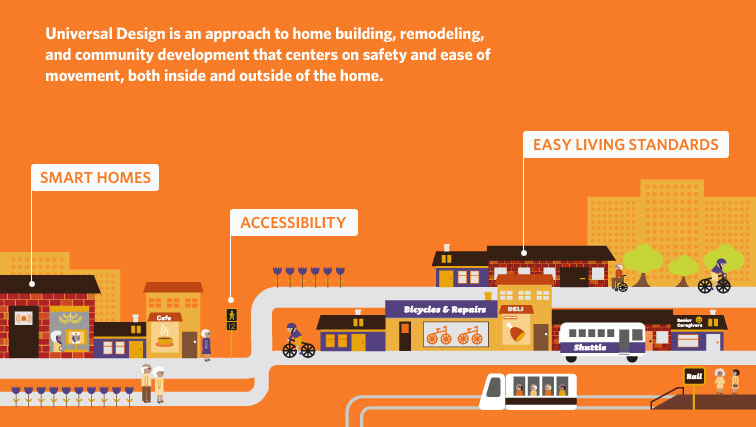Universal Design Conference
Last week we attended the inaugural Universal Design Conference in Sydney. The keynote address was delivered by Dr Gerald Craddock, Chief Officer, Centre for Excellence in Universal Design (Ireland). The Centre aims to infuse universal design into curricular at all levels; develop standards; and promote the benefits of universal design. The UN Convention on the Rights of Persons with Disabilities calls for Governments to embrace Universal Design (UD) in developing new products, services and environments. Change will come from the key elements of UD being accepted as best practice and making economic sense.
Government needs to lead the way in creating liveable communities for all citizens, Kathryn Greiner told the conference in her address. Ms Greiner, who is the chair of the NSW Ministerial Advisory Committee on Ageing, told COTA NSW’s Universal Design Conference that public policy was only good policy when it assisted all members of the community. She said government had to engage the wider community in its efforts as well as the private sector, which would be absolutely essential to putting affordable housing for people to age in place.
Age Discrimination Commissioner Susan Ryan has backed calls for Australia to follow Ireland’s lead and establish a centre for excellence in universal design.
Ms Ryan told conference that embedding inclusive design principles in Australia would support the implementation of both aged care reform and the National Disability Insurance Scheme. Speaking after a keynote address by Dr Gerard Craddock, chief officer of the Centre for Excellence in Universal Design in Dublin, Ms Ryan said the success of the Irish centre was a call for action in Australia. “I have come across a lot of big ideas and many good ideas but I don’t think I have come across an idea that is as exciting in its ramifications and possibilities as the idea of universal design,” she told the forum instigated by Council on the Ageing NSW. “During the time I have been Age Discrimination Commissioner and very recently Disability Discrimination Commissioner, I can’t think of an idea which if implemented would make a bigger impact.” Ms Ryan said Australia’s ambitious social reform agenda relied on environments that promoted independence and an older person’s capacity to exercise choice. She said this involved accessible public transport and universally designed housing and neighbourhoods. “You can’t successfully age-in-place at home if the home is badly designed,” she said. For people with a disability, boosting workforce participation required access to buildings and workplaces that met the needs of everyone in the community. She said:
“The NDIS and aged care reform really depend on universal design to work.”
Ms Ryan said that current implementation of universal design in Australia was patchy and she committed to supporting any efforts to establish a centre for excellence in Australia to harness its “transformative impact” locally.
Helen Larkin, senior lecturer at Deakin University and Head of the Design for Diversity Initiative, in her address said that universal design ran the risk of being marginalised and we would be better off making the case for attention to good design for all.


